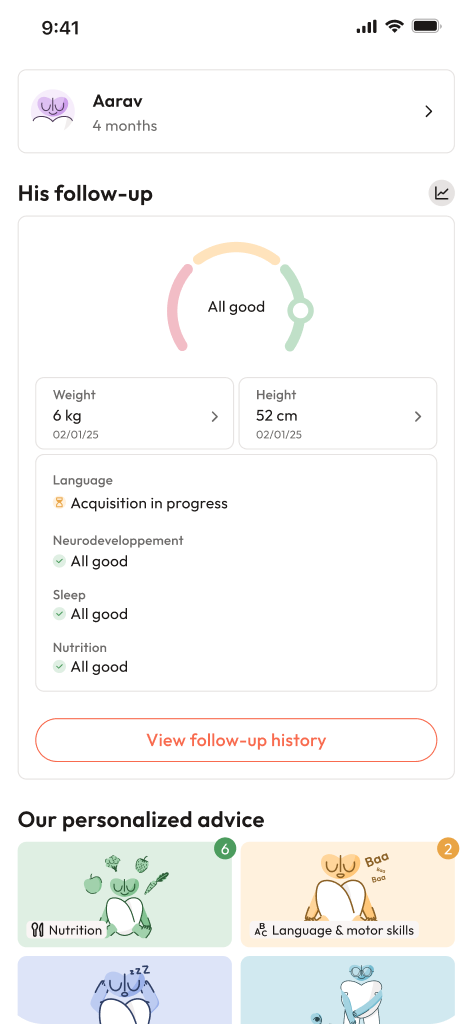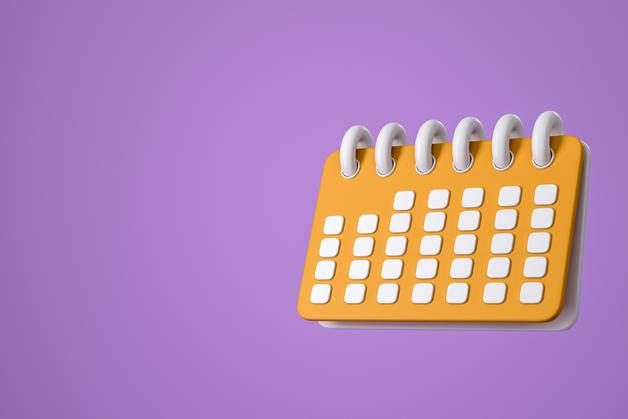Sometimes, the journey of pregnancy throws up sudden, unexpected moments—one such moment being the rupture of membranes. Many parents picture the classic scene from films: a dramatic gush of water, panic, and an immediate dash to the hospital. But real life? Often more subtle, sometimes confusing, and always tinged with questions. Could that dampness in your underwear be amniotic fluid, or is it just sweat or urine? Should you rush to the doctor if you notice a trickle, or can you monitor at home first? These aren’t trivial worries. Decisions made in those hours, how you interpret what’s happening, can shape the next steps for both baby and parent.
Rupture of membranes (you might hear people call it your “waters breaking”) sits at the crossroads of excitement and anxiety. When it happens, it signals a tipping point in pregnancy: birth is approaching, but the rules of monitoring, when to seek care, and what risks to watch for will depend on your situation. Let’s walk through what signs to recognise, how to track changes, and why understanding the timing and characteristics of the leak gives you more control and reassurance.
What is Rupture of Membranes? Spotlight on Key Concepts
The amniotic sac is a remarkable structure—a dual-layered membrane (the amnion on the inside, the chorion outside) holding about a litre of amniotic fluid around your baby. This fluid isn’t just cushioning; it’s a living medium, packed with nutrients, minerals like sodium and potassium, growth factors, and even fetal cells. Its functions: prevent cord compression, maintain temperature, let baby “breathe” and swallow, and block germs from ascending toward the uterus.
When the rupture of membranes occurs, amniotic fluid escapes either all at once—a classic gush—or as a slow, persistent drip. The timing is vital. If it’s at or after 37 weeks (“term”), it might be enrollment in active labor or the beginning of a short wait. If it’s before, especially pre-37 weeks, it’s called preterm premature rupture of membranes (PPROM)—and that, understandably, sets off a whole different sequence in maternity care.
You’ll often come across special abbreviations:
- PROM: “Premature rupture of membranes”—waters breaking before labor actually begins.
- PPROM: The same before 37 weeks’ gestation.
- SROM: “Spontaneous rupture”—it happened naturally during labor.
- AROM: “Artificial rupture”—a clinician intervenes, often to help labor progress.
When the amniotic sac loses its integrity, infection risk ticks upward, and attention turns sharply toward the baby’s wellbeing, the amount of remaining fluid, and the risk factors at play.
Signals to Watch For: What Does Rupture Actually Look and Feel Like?
You might expect a tidal wave, but reality is often more understated. Amniotic fluid, typically clear or faintly cloudy and with barely any odour, soaks a sanitary pad easily and may become more obvious when standing, laughing, or moving. Compare that to urine (yellow, distinct smell, thicker) or normal vaginal discharge (creamy, occasionally stringy).
Consider these distinctions:
- Colour: Amniotic fluid = clear or very slightly milky; urine = yellow; discharge = cream or white.
- Odour: Amniotic fluid = mild or almost neutral; urine = unmistakable smell; discharge = varies.
- How it behaves: Amniotic leakage = persistent, increases with position change. Urine = linked to bladder fullness, often ends after you void. Discharge = thicker consistency, sometimes copious late in pregnancy.
Still unsure? Take a simple home approach: shower, wear a clean pad, walk for a while, and check after 1 to 2 hours. Persistent, watery wetness raises suspicion for rupture of membranes, but only a clinical check can confirm. Some women never feel a huge gush—just damp underwear or bed sheets, especially overnight, and a lingering sense of “it just isn’t stopping.”
Slow Leak or Sudden Gush? Each Path Has Its Meaning
A dramatic “pop” followed by flooding soaks the bed—is it dangerous? Not always, but monitoring accelerates. More often, there’s a sneaky, repeating trickle, especially after standing or going upstairs. Both “gush” and “leak” mean the protective barrier is breached, but your management pathway depends on how much fluid is coming out, how long it’s been happening, and (most importantly) how far along you are in the pregnancy.
Immediate Steps: Mitigate Risks, Prepare for Next Moves
Let’s say you suspect your rupture of membranes. Key steps:
- Note time of onset, fluid’s appearance (clear/yellow/green/brown), odour.
- Put on a clean pad—not a tampon—and avoid inserting anything vaginally (no douching, no intercourse).
- Shower, don’t bathe until told it’s safe.
- Keep important records (prenatal details, lab tests, allergies) and a charged phone close by.
- Observe the baby: are movements normal? Any contractions?
- Notice changes: fever, foul-smelling fluid, heavy bleeding, or a sense of “something isn’t right” all mean it’s time to head to the hospital straight away.
Medical Assessment: How Doctors Confirm Rupture of Membranes
Clinicians use a step-wise assessment:
- Speculum exam: does clear fluid pool near the cervix?
- pH testing with nitrazine paper: amniotic fluid is more alkaline.
- The “fern” test: microscope reveals classic crystalline patterns.
- Ultrasound: checks amniotic fluid index and sees if pockets of fluid remain.
- Biomarker assays: rapid bedside kits like PAMG-1 (AmniSure) or IGFBP-1 help when diagnosis is blurred.
If results conflict (very small leaks, older cases, blood or mucus contamination), teams may repeat tests, rely on ultrasound trends, and always monitor for infection by tracking maternal fever and baby’s heart rate.
Causes and Pathways: Why Do the Membranes Rupture?
Many triggers exist. At term, a mixture of hormonal changes, local inflammation, and increasing pressure signals the membranes to give way naturally. But sometimes, hidden risk factors tip the balance earlier:
- Previous PPROM, a short gap between pregnancies, smoking, undernutrition, and infections (bacterial vaginosis, sexually transmitted infections) all contribute.
- Mechanical stress: twins, polyhydramnios, large baby, uterine abnormalities.
- Collagen disorders (Ehlers–Danlos), cervical treatments (conisation), and even dental inflammation can make the membranes more fragile.
- Invasive tests (like amniocentesis) very rarely set off a delayed leak.
Inside the body, enzymes named matrix metalloproteinases nibble at the collagen, thinning and weakening the sac’s construction—especially if infection is brewing quietly.
Complications and Surveillance: What Parents Need to Know
Once the amniotic sac is ruptured, infection risk (chorioamnionitis) begins to rise. For parents, this means being alert for fever, abdominal pain, uterine tenderness, or changes in baby’s movement. For the baby, the watchpoints are related to cord compression, muscle development limitations, and, if very premature, underdeveloped lungs (pulmonary hypoplasia).
Maternal issues like endometritis (uterine wall infection) and, rarely, sepsis must be minded. And the longer the wait between rupture and birth (often called “prolonged rupture of membranes,” generally after 18–24 hours), the sharper the risk.
Management by Gestational Age: Not Every Rupture Has the Same Outcome
At and After 37 Weeks (Term)
Most women go into spontaneous labor within 24 hours. If not, induction is commonly offered to reduce infection chances. If fluid has meconium (greenish due to baby’s first bowel motion), newborn care is ramped up at delivery.
34–36+6 Weeks (Late Preterm)
Some hospitals lean toward delivery, others choose close observation, aiming to keep baby inside longer unless infection or other danger signs arise. Antenatal corticosteroids help mature baby’s lungs when birth is expected soon.
24–33+6 Weeks (PPROM)
Prolonged hospitalisation with close monitoring is the norm. Latency antibiotics are started (to prolong pregnancy and prevent maternal or baby infection), and corticosteroids are given between 24 and 34/35 weeks. Sometimes, magnesium sulfate protects the baby’s brain if birth is anticipated before about 32 weeks.
Below 24 Weeks (Periviable/Previable)
A difficult period for any parent—risks of severe organ underdevelopment, low survival. All discussions naturally turn sensitive and focus on options, infection risk, and the wider medical-ethical framework.
Protecting Against Infection: Proactive and Responsive Approaches
Hand in hand with rupture of membranes comes stepped-up vigilance. Infection in the amniotic cavity (chorioamnionitis) typically means delivering quickly after diagnosing—antibiotics are started, and baby monitoring intensified. After birth, any hints of infection lead to close observation and sometimes precautionary antibiotics for both mother and newborn.
At Home and Beyond: Monitoring, Prevention, and Practical Parenting Tips
If you are sent home for observation, timely monitoring is every parent’s anchor. Track your temperature, keep an eye on the amount, smell, and look of the leakage, and count the baby’s kicks—feeling fewer than usual should prompt a call to your care provider (better to be checked for false alarm than miss a danger sign).
Prevention? While no magic bullet (“prevention is better than cure” has limits here), keeping infections at bay during pregnancy by using gentle hygiene routines, wearing breathable underwear, treating dental issues, keeping hydrated, and attending all prenatal check-ups helps. Some at-risk situations (history of preterm birth, short cervix, twins) require more frequent scans and might prompt your clinician to advise extra treatments like progesterone or a cervical stitch.
FAQ: Common Pitfalls and Parental Dilemmas
It’s easy to confuse stress incontinence (leaking urine with laughing or coughing) or a surge in vaginal discharge (hormonally heightened near the end of pregnancy) with rupture of membranes. If in doubt, repeat your observations, but never hesitate to err on the side of caution—the risk of infection or an undetected complication outweighs false alarms.
Before Hospital: Preparation and Parental Empowerment
Keep ready:
- Your maternity records, insurance details, a list of allergies/medications
- Time, amount, and characteristics of any leak
- Questions or concerns (no query is trivial)
- Essentials: a spare set of clothes, baby-care basics, extra pads
After Rupture: Hospital Pathways and Follow-Up
Hospital admission is generally required for PPROM, especially if you are under 37 weeks. Team monitoring continues: regular temperature checks for you, continual or intermittent heart monitoring for baby, repeated fluid assessments by ultrasound, and tests for infection when needed. The route and duration of hospital stay depend on your gestational age, presence or absence of infection, and how you and your baby tolerate the waiting game.
Key Takeaways
- Rupture of membranes marks a pivotal point. The pattern of leakage, time elapsed, and your baby’s wellbeing guide every step taken next.
- If you notice clear, persistent leaking, document everything: timing, volume, colour, smell, fetal movement, and any new symptoms.
- At term, most women go into labor soon after their membranes rupture; if not, prompt induction lowers infection risks.
- Before 37 weeks (PPROM), hospital admission and preventive treatment—especially with antibiotics and corticosteroids—are the norm. Every extra day gained safely before delivery helps.
- Act rapidly if you notice fever, abnormal discharge, greenish or brownish fluid, heavy bleeding, strong contractions, or a marked drop in fetal activity.
- It’s natural to be anxious, but you’re never on your own—clinicians, midwives, and trusted resources are available to guide you.
- For extra help at every stage, personalized advice, and health questionnaires for your child, download the application Heloa without delay.
Questions Parents Ask
How long can I safely wait after my water breaks before I need to go to the hospital?
A quick answer would be: it depends entirely on your gestational age, symptoms, and presence of any warning signs. At term (after 37 weeks), most women begin labor within 12–24 hours post-rupture of membranes. If strong contractions, fever, foul-smelling or green fluid, heavy bleeding, or any changes in baby movement appear, notify your healthcare provider or go in immediately. If you remain well, some doctors suggest a short period at home while keeping track of leak and movements. Below 37 weeks, contact your care provider right away, as PPROM demands hospital evaluation. Always, note the exact time, amount, and look of the leak before you make the call.
Can I go home after my membranes rupture?
You may, especially at term, with no infection indicators, normal baby activity, and no worrisome symptoms. Sometimes, home monitoring is allowed, but with very clear instructions on when to return—such as any signs of fever, pain, or reduced fetal movements. If you are preterm, have abnormal findings, or infection risk is high, admission is usual. Your team decides based on gestational age, test results, and personalised risk. Never hesitate to ask for precise home-care instructions.
What does “prolonged rupture of membranes” mean, and why does the exact timing matter?
Prolonged rupture of membranes means the sac has been open longer than the “safe” window, usually defined as over 18–24 hours before birth. Time matters because risk of chorioamnionitis (infection) increases steadily, impacting both mother and newborn safety. It affects when antibiotics begin, how closely you are monitored, and when labor might be induced. If you’re ever unsure how long the leak has lasted, always inform your care team—it’s a key detail for a tailored, informed care plan.

Further reading:









